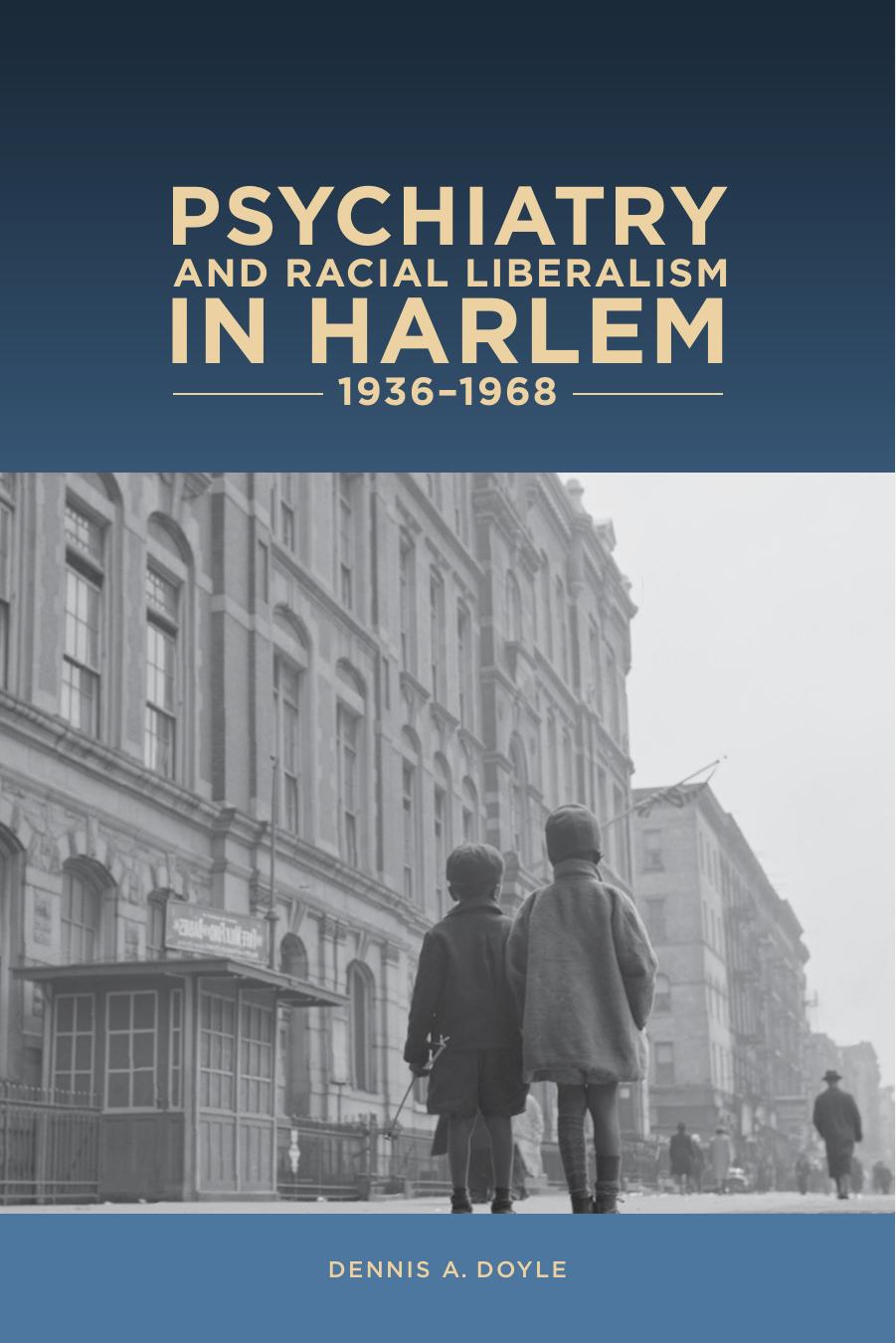Psychiatry and Racial Liberalism in Harlem, 1936-1968 by Dennis A. Doyle

Author:Dennis A. Doyle [Doyle, Dennis A.]
Language: eng
Format: epub, pdf
ISBN: 9781580464925
Barnesnoble:
Publisher: Boydell & Brewer, Limited
Published: 2016-10-20T00:00:00+00:00
Chapter Five
The Quiet One
Racial Representation in Popular Media and Psychiatric Literature, 1942â53
The Quiet One debuted in New York City in 1948. This Academy Awardânominated film tells the fictional story of Donald Peters, a young African American sent from Harlem to live at the Wiltwyck School for Boys in the Catskill Mountains. Hailed by most critics as an authentic and medically accurate portrayal of juvenile delinquency,1 the film was produced on location with the full cooperation of Wiltwyck, a private reform institution run by Justine Wise Polier, Viola W. Bernard, and other New Yorkers committed to preventing juvenile delinquency in central Harlemâs black community.
Despite otherwise rave reviews, at least one New York psychiatrist expressed dissatisfaction with the film. Hilde Mosse was among the cityâs growing number of race-blind clinicians. She had experience treating Harlemites. Mosse branded The Quiet One a âmisleadingâ deception, claiming it grossly distorted the reality of central Harlemâs slums. Because âthe audience is led to believe that they are seeing a film about juvenile delinquency in general,â rather than one about the special emotional challenges facing African Americans growing up in a racist society, Mosse wrote off the film as a dangerous misrepresentation of both black life and delinquency in Harlem.2
In the Northern civil-rights movement, many antiracists expressed concern with media representations of race. By the late 1940s, social scientists challenged racial prejudice and the depiction of African Americans in popular culture. Some historians have understood these efforts as separate from and even at odds with efforts to change the lives of actual blacks. They argue that racial liberals combating racial stereotypes tended to see racism as a personal problem, focusing on eliminating simple racial prejudice rather than confronting institutional racism. In this view, the civil-rights movement was split between those who sought to change the hearts and minds of whites and those who sought to alter life outcomes for African Americans.3
Nevertheless, this model of a bifurcated civil-rights movement may not be the best way to understand why Bernard and Mosse were both so interested in the media representation of race. In fact, their efforts to combat racist imagery were inseparable from the battle against psychiatric racism. The issue of racial representation only arose when the circulation of racist ideas âdenied some individuals and groups the possibility of participating on a par with othersâ in New Yorkâs system of mental health care.4 As long as ideas of black inferiority justified the neglect of the emotional needs of Harlemâs residents, the predominance of those ideas constituted an unjust barrier to the equal allocation of medical resources.
Antiracist clinicians used the mass media to generate support for new private institutions, largely because efforts to meet blacksâ emotional needs through the public sector had stalled. Confronted with entrenched racism and a Cold War climate inhospitable to the interracial expansion of social services, activists hedged their bets and sought out mental health alternatives.5 Private facilities such as the Wiltwyck School and Hilde Mosseâs Lafargue Mental Hygiene Clinic were supposed to compensate for governmental neglect of Harlemâs needs.
Download
Psychiatry and Racial Liberalism in Harlem, 1936-1968 by Dennis A. Doyle.pdf
This site does not store any files on its server. We only index and link to content provided by other sites. Please contact the content providers to delete copyright contents if any and email us, we'll remove relevant links or contents immediately.
Psychiatry and Racial Liberalism in Harlem, 1936-1968 by Dennis A. Doyle(105)
Doctors of Deception : What They Don't Want You to Know About Shock Treatment by Linda Andre(89)
The Daly Dish Bold Food Made Good by Daly Gina;Daly Karol;(84)
Pharmaceutical Medicine and Translational Clinical Research by Vohora Divya;Singh Gursharan; & Gursharan Singh(83)
The Stem Cell Hope by Alice Park(83)
How Not to Study a Disease by Karl Herrup(81)
Doctoring Freedom by Gretchen Long(79)
The Cure for Women by Lydia Reeder(77)
How We Became Sensorimotor: Movement, Measurement, Sensation by Mark Paterson(75)
9781836207139 by Miguel Gonzalez(74)
Tissue Engineering: Principles and Practices by Fisher John P(73)
Proper People: Early Asylum Life in the Words of Those Who Were There by David Scrimgeour(72)
A Secret Mind by Kaye Kelly(72)
Medical Applications of Beta-Glucan by Gürünlü Betül;(63)
Summary and Analysis of Patient H.M. by Worth Books(62)
The Changing Face of Medicine : Women Doctors and the Evolution of Health Care in America by Ann K. Boulis; Jerry A. Jacobs(62)
Women Doctors in War by Judith Bellafaire; Mercedes Herrera Graf(62)
Mixing Medicines by Griffin Clare;(59)
The Right Carb by Nicola Graimes(58)
